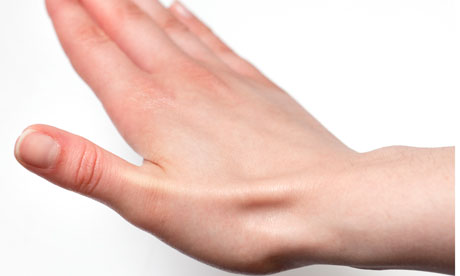
Doctors are drawn into their profession for all sorts of reasons. Some follow in the footsteps of a relative or friend. Others excel at science at school. In my case, the decision was made one morning, out of the blue, as I looked into an open body.
While studying English literature as an undergraduate I had a friend whose father was a surgeon. When introduced to him, I badgered this man so relentlessly about his job that he asked if I would like to visit his operating theatre.
Over the course of a day, I watched him remove a cancer from a man's jaw, then repair it. I will never forget the way I felt seeing someone's face being dissected, layer by layer, then rebuilt. I made the decision then and there that I wanted to go to medical school.
It's been nearly 20 years since that day, and now I'm a surgeon myself. But I have never lost my sense of wonder at the human body. This column is about the details of the body that have fascinated me; parts as big as a leg, or as small as a cell. I don't aim to be comprehensive, but to convey something of what continues to fascinate me about the wonderful subject of human anatomy.
The hand's early-warning system
Get into position to shake someone's hand, and look at where the base of your thumb meets your wrist. Between the two tendons you will find the anatomical snuff box. In bygone times, this pretty dip was just the right size for snorting snuff from, but today it is known as a hazard-zone by any doctor who has been through training in emergency medicine.
I did mine at The Royal London Hospital and still remember how important I felt turning up to a department which had its own helicopter. Less glamorous was the lecture I received on my first day about all the ways a junior doctor in A&E could end up being sued. One of these involved the anatomical snuff box.
If a person falls on their outstretched hand, they are most likely to break the radius, one of the two main bones supporting the forearm. The most common type of fracture in these circumstances is known as a Colles fracture, where a fragment of bone is broken off the end of the radius and pushed backwards. This is usually detectable on the two routine X-rays requested for any serious wrist injury, and is often correctable under local anaesthetic in the A&E department.
What is much easier to miss, is a break in the scaphoid – one of the bones within the hand – which is also vulnerable to damage from a fall on to the palm. These fractures may be undetectable on routine images from the radiographer. Even special x-rays, showing the wrist from different angles, may appear normal for days after an injury. And scaphoid fractures often result in compromise to the bone's blood supply from the radial artery, one of the main two arteries in the forearm, until the substance of the bone is deprived of essential nutrients. If this occurs a patient can have life-long problems with arthritis of the wrist.
One should never forget to press in the anatomical snuff box of someone who has fallen on their outstretched hand. Eliciting pain from so doing raises a strong suspicion of a scaphoid fracture, which can then be treated, saving both patient and doctor a great deal of trouble further down the line.
Gabriel Weston

